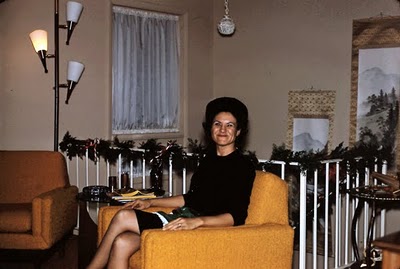[Note: This post got really long, so I used some sub-heads if you want to skip to different portions — Unabomber’s Lament near the end is probably the most interesting point]
Some of the books I read have really nothing to with my everyday life, and after I write about them here I don’t think about them again.
Chuck Klosterman’s “Eating The Dinosaur” is not one of those books. I finished reading it last week and already I have brought up some of Klosterman’s points in two separate conversations.
I guess you could describe Klosterman as a culture critic, or as one of the blurbs says, “pop-culture philosopher.” Basically he has spent some time thinking about things that are culturally relevant to people alive today. That means discussing the “reality” of art using Weezer’s Rivers Cuomo or the way technology effects us with the Unabomber’s manifesto. In short, his examples bring to mind phrases like, “I saw that movie,” “I have that album” or “I remember when that guy got arrested.”
Talk To Me
One of the early themes in the book is the nature of interviews, and the relationship between interviewers and their subjects. Klosterman writes that as journalists, we ask questions in interviews that we would never ask of our friends or in any normal conversation. And yet, people answer. They accept the “acceleration of intimacy” and open up to someone they usually have never met.
So why do celebrities, public officials and everyday people involved in newsworthy events respond to interviewers? Klosterman writes, “People answer questions because it feels strange to do the opposite.”
If you’ve never conducted an interview, this is a key point to understand. We feel naturally compelled to answer questions when people ask. A really effective technique as an interviewer is to wait a second or two after you think the person is done giving an answer before launching into your next question. What happens is this moment where they finish, and then feel compelled to keep going and add onto their response. Why? It feels strange to sit there when someone seems interested in what you’re saying.
One of the aforementioned conversations about the book was with my younger brother as we drove to and from New Jersey this weekend. With his iPod on shuffle, we heard a lot of songs from bands who were once very popular but now have disappeared from the music landscape.
Think about a band like Creed. Today it is popular to say you don’t like Creed and can’t understand why anyone ever would. But in 2000-01, you liked Creed. If the song “My Own Prison” came on the radio today with no one else around, you would nod along and enjoy yourself. If someone walked in the room you would change the station and say you’ve always hated Creed. But in 2000, the band had the 4th-highest selling record in the U.S., and a year later had another album in the Top 10. You could make similar statements about bands like Hootie & The Blowfish, Maroon 5 and Limp Bizkit.
Beauty In The Eye
Then again, any form of art is open to interpretation. In later essays, Klosterman writes about director Wong Kar-Wai’s “terrible” film “My Blueberry Nights,” which I happened to really enjoy. That may be partially explained by the presence of both Norah Jones and Natalie Portman, but I found the story interesting as well. He’s also clearly not a fan of the CBS geek comedy “The Big Bang Theory,” which my DVR is set to automatically record each week. But whatever. I know from his previous works that he is a big fan of the band KISS, which I could care less about.
Before reading the book I had heard it was a sort of return to the style of his earlier “Sex, Drugs and Cocoa Puffs” (SDCP). I would partially agree, but would say “Eating The Dinosaur” is much more of a critical selection of essays with less overt humor. Where SDCP is non-stop hilarious for pages at a time, this book is peppered with just a few funny sentences that break up more serious discussion.
I’ll use the same device and provide some examples to break up my longer piece.
Last year, one of the books I read was George Orwell’s “1984,” which I had originally read in high school. I wrote then how different it seemed to read it the second time. Klosterman had a similar experience with H.G. Wells’ “The Time Machine.”
“It became my favorite novel for the next two years, but solely for textual reasons: I saw no metaphorical meaning in the narrative. It was nothing except plot, because I was a fucking sixth grader.” He goes on to describe how as a 30-year-old he tapped into the metaphorical side.
In an essay complaining about the use of canned laughter in television sitcoms, he gives a great modern way to tell someone to shove it. “Perhaps you think that railing against canned laughter is like complaining that nuclear detonations are bad for the local bunny population. I don’t care. Go read a vampire novel.”
Miley-Mania
For those who can’t understand why Miley Cyrus is popular or why so many people watch shows like “The Hills” and “Jersey Shore,” Klosterman has your answer. Certain pop-culture phenomenons that many may describe as “idiotic” or “trashy” serve a few important functions in our culture. “They allow Americans to understand who they are and who they are not,” he says. “They allow Americans to unilaterally agree on something they never needed to consciously consider.” Basically, we don’t need to care about Britney Spears, but she gave us something to talk about and bond over as a society.
Unabomber’s Lament
Probably the most interesting section of the book is Klosterman’s discussion of the Unabomber, a.k.a. Ted Kaczynski. I have to admit that even though I was very much aware of Kaczynski when he was arrested, I had no idea why he was called the Unabomber. As Klosterman points out, most of his bombing targets were (UN)iversities and (A)irlines.
He is quick to point out that Kaczynski is a psychopath who clearly has destructive ideas. But in analyzing the manifesto Kaczynski insisted be published in the Washington Post and New York Times, Klosterman finds the psychopath does have some good points about how technology — more specifically, the Internet — is affecting our culture.
“Even though he deserves to die in jail, Kaczynski’s thesis is correct: Technology is bad for civilization. We are living in a manner that is unnatural. We are latently enslaved by our own ingenuity, and we have unknowingly constructed a simulated world. The benefits of technology are easy to point out (medicine, transportation, the ability to send and receive text messages during Michael Jackson’s televised funeral), but they do not compensate for the overall loss of humanity that is its inevitable consequence.”
I was talking with a co-worker last week about the way things like Facebook and smartphones have changed the way we interact, and not always for the better. Kaczynski would say those are technologies that we created, and now feel an obligation to use in a cycle that continues to perpetuate itself.
As my co-worker cited about herself, we can’t sit in a waiting room without reflexively pulling out our phones to have a text conversation or update our status to let everyone know we are sitting in a waiting room. That changes the way we communicate, and the way we experience the world around us. Gone are those times where we sit quietly and reflect on something or enjoy moments of being completely disconnected from the pace of everyday life.
I am certainly guilty of this trend. While writing this admittedly long post, I have checked on my fantasy football team, Facebook and Twitter, all while watching a football game on TV.
Even More Technology
If you want more on the way technology is shaping us, both beneficially and not, I’ll leave you with two interesting pieces:
Frontline: Digital Nation
WNYC’s Radiolab podcast: What Does Technology Want?




